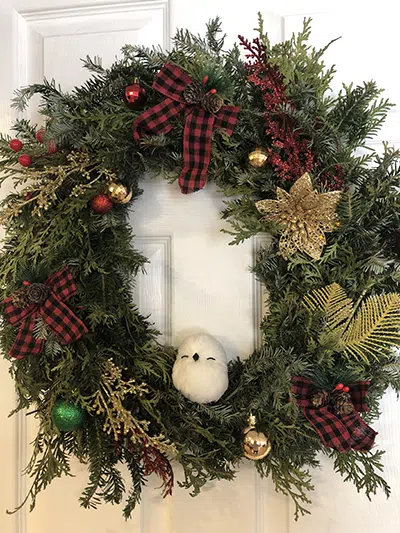Toronto - Beautiful, vibrant capital city of Ontario - and Raccoon Capital of the World! Indeed, estimates of the number of raccoons that call Toronto home, range from 60,000 to 100,000. Torontonians seem to have resigned themselves to share their neighbourhoods with the ever present trash pandas. But, how did this come about?

Urbanization in Toronto
What does urbanization mean? It refers to the shift of populations from rural to urban areas. In terms of people, it is most often the result of availibility of employement opportunities, amenities, and cultural centres. Toronto boasts vast manufacturing and industrial expansion. Toronto's populatin has increased by well over 2 million since the year 2000 to almost 6,500,000 residents now. That's not counting raccoons! :)
How Does Urbanization Affect Raccoons?
When it comes to raccoons and other wildlife, it isn't so much the animals packing up and moving to the city, but rather, the city taking over their habitat. When we build sub divisions in previous wilderness, we'll not only take over the land, but also its inhabitants. For some species, the loss of habitat can be devastating, but raccoons are incredibly adaptable and opportunistic creatures and continue to thrive. When the woods disappear and hollow logs become scarce, a chimney might do just as well. And, a den in your attic may actually be an upgrade from the equivalent in the bush.
Why Toronto?
In short - Toronto has evrything a raccoon will ever need or want. Toronto has plenty of wooded areas, parks, and forests. There are also a ton of rivers, ponds, streams.. and let's not forget Lake Ontario. And then, there's talk of Torontonians just being such considerate hosts :) No, seriously, well meaning citizens had a habit of feeding wildlife and supposedly were somewhat lax when it came to waste disposal. The term 'Trash Panda' was coined before lockable garbage bins were a thing.
Raccoon Behavior and Biology
The raccoon (Procyon lotor), is a stocky mammal, weighing 10 to 30 pounds (4.5 to 13.5 kg). Well-fed individuals (especially, in urban centres) may weigh 14 kg or more at maturity. Male raccoons are larger than females with an average body length of 80 to 95cm nose to tail tip. Females average 73 to 85 cm in length. The raccoon is easily recognized by its prominent black “mask” over the eyes and a heavily furred, ringed tail. The 5 clawed toes on the front and hind paws resemble hands and provide the animals with high dexterity.
Nocturnal Behavior
Raccoons are mostly nocturnal. That said, it isn't entirely unusual to see a raccoon mulling about during the day. Lactating females require more calories and more frequent feedings and the mere availability of food may be enough to suspend any raccoon's daytime slumber to have a midday snack. Also, a raccoon could be frightened or threatened and be cautiously on the lookout for danger. See where raccoons live during the day here »
Reproduction and Population Growth
Raccoons usually mate in February and March. A male raccoon will court and impregnate several females in one mating season. After a 63 day gestation period, the female will deliver 3-5 kits once a year. Newborn kits weigh about 75g. They are blind and helpless until about 3 weeks of age. By the time they are 6 weeks old, they will venture outside of the brood den to discover the world outside. By 2-4 months, they will be completely weaned and able to look for food with the mother. At 12 months they have fully matured and will set off on their own. The average life expectancy is 3-5 years, although some raccoons in the wild have been found to live much longer. In the wild, a male raccoon's territory may be as large as 250 acres. Of course, in an urban environment, they do not have to travel far. Everything they'll need is readily available in their vicinity. This likely answers the question of why are there so many raccoons in Toronto?
Encounters with Humans
Physical conflict between humans and raccoons are rare. Conflicts between raccoons and human belongings are an entirely different thing. From dens under your deck to a family moving into your attic, from your garbage strewn about to unsightly and potentially hazardous droppings left on your patio, from your lawn dug up to your garden raided... damage can be extensive. If or when you do encounter a raccoon in the flesh, please do not corner him. He will become aggressive if felt threatened. If raccoons are a problem around your home, it's best to consult a Wildlife Professional.
Surely, there must be many funny stories involving raccoons around humans, but one that sticks out is the raccoon who managed to sneak into a Toronto Tim Horton's (can you get any more Canadian!?) and proceeded to rummage through cubboards behind the counter - with an employee looking on in disbelief :)
Wildlife Control Measures
If you're up to the task, there are some measures you can take to make your home less appealing to raccoons. Modyfiying the environment is your first line of defence and often enough to deter our industrious raccoon visitors. If you are considering setting a trap, please make sure that you abide by all Ontario Wildlife regulations. Again, if your exclusion efforts don't yield the desired results, it may be time to call in the professionals.
Secure Garbage Bins
One of the first things you'll want to do, is to secure your trash cans. Raccoons are crafty and intelligent critters - you may have to use something like bungee cords to secure your waste bin. Even better, if there's a way to store your trash indoors.
Remove Outdoor Food Sources
Move your pet's food and water dishes inside. Raccoons are quite fond of both dog and cat food and leaving water out is never a good idea. Rabies is transmitted through saliva and an infected raccoon can easily contaminate water left in a dish, putting your pet and your family at risk.
Seal Entry Points
Inspect your home from the outside in. See if there are any holes or spaces, loose shingles, or damaged materials a raccoon could exploit. Repair or replace what you can.
Install Chimney Caps and Vent Covers
When inspecting your home for weak points, don't forget your chimney. Install a chimney cap and vent covers and trim branches close to your roof.
Use Motion-Acticated Devices
While this is a very temporary measure, it may at least buy you some time to get to necessary repairs around your home. Motion-activated flood lights may hold off a raccoon on the prowl. Eventually, they will realize that there is no actual danger and ignore the lights.















